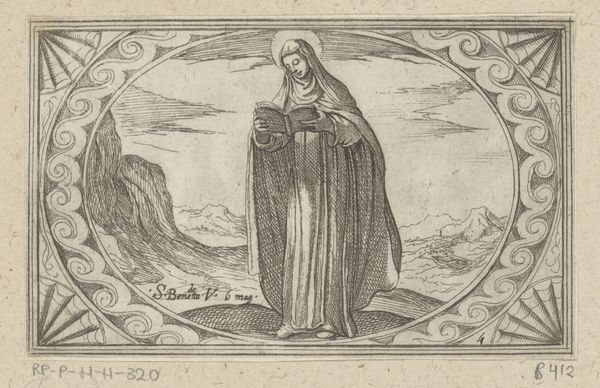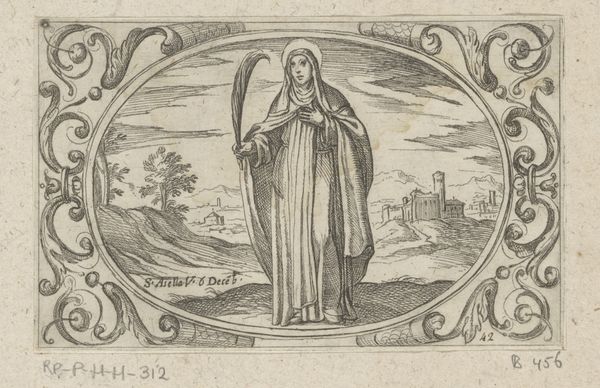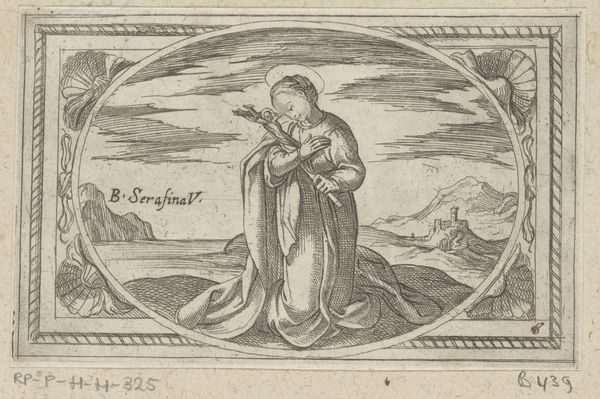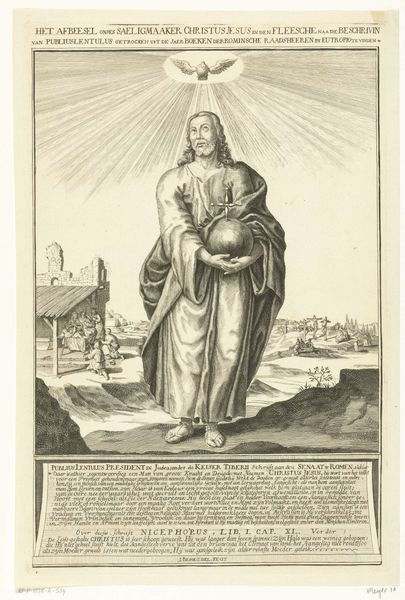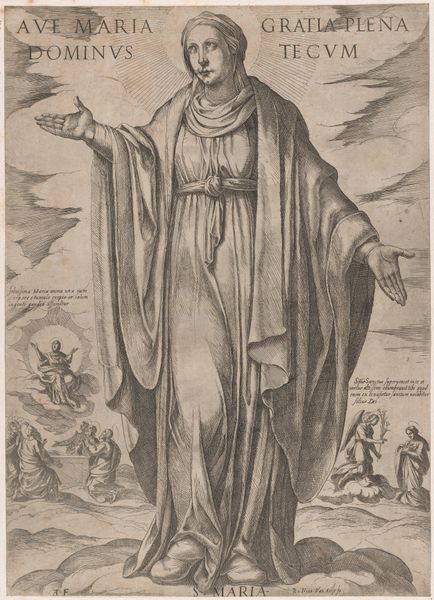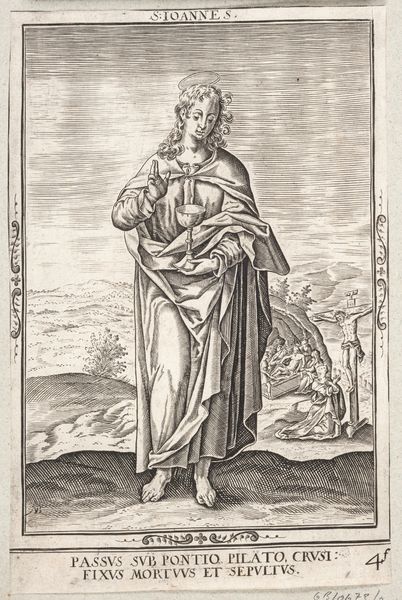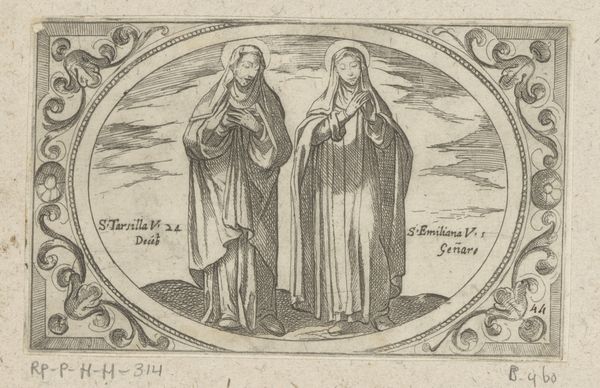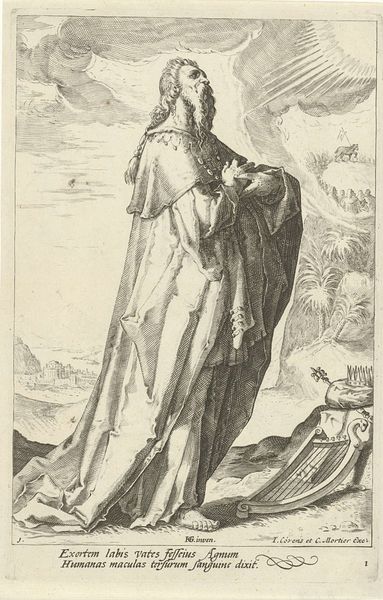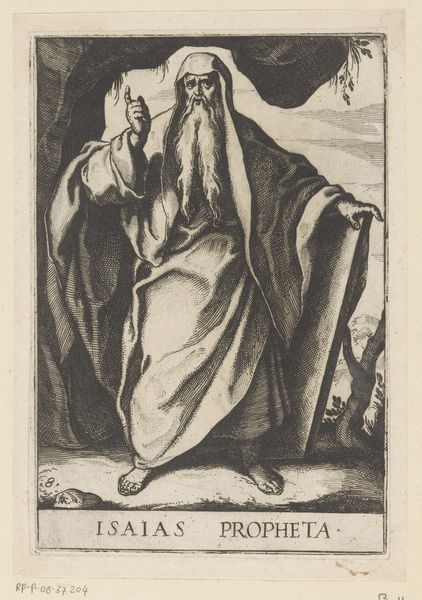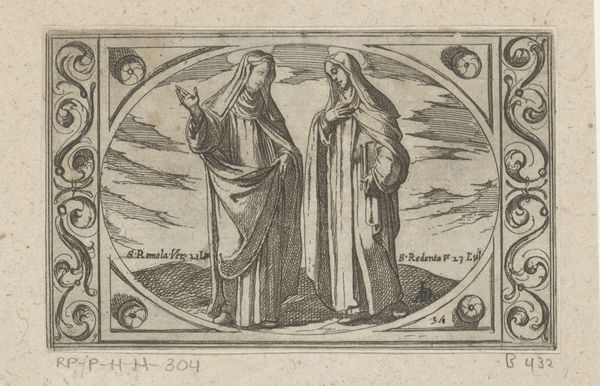
print, engraving
#
baroque
# print
#
old engraving style
#
figuration
#
history-painting
#
engraving
Dimensions: height 73 mm, width 114 mm
Copyright: Rijks Museum: Open Domain
Antonio Tempesta created this small etching of H. Marcellina in the late 16th or early 17th century. Immediately, one notices how the saint's figure dominates the composition, framed by an ornate oval border. Her elongated form and upward gaze create a sense of verticality, contrasted by the horizontal landscape elements. Tempesta’s use of line is particularly striking. The intricate network of fine lines not only models the drapery and landscape, but also serves a deeper purpose. The density and direction of these lines create tonal variations, giving volume and depth to the otherwise flat surface. The formal structure invites a semiotic reading, where the saint's posture and halo function as signs of holiness. The landscape, with its distant buildings, might be seen as a symbol of earthly life, from which Marcellina is turning away. This interplay between the earthly and the divine, rendered through the language of line and form, provides a glimpse into the spiritual and artistic concerns of the time. Note how this detailed use of line shapes not just our visual but also our intellectual engagement with the piece.
Comments
No comments
Be the first to comment and join the conversation on the ultimate creative platform.

